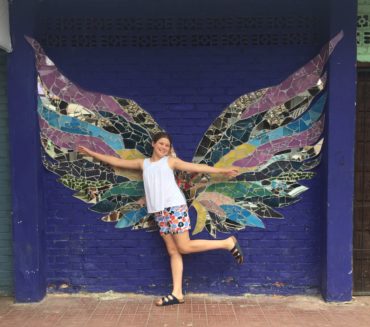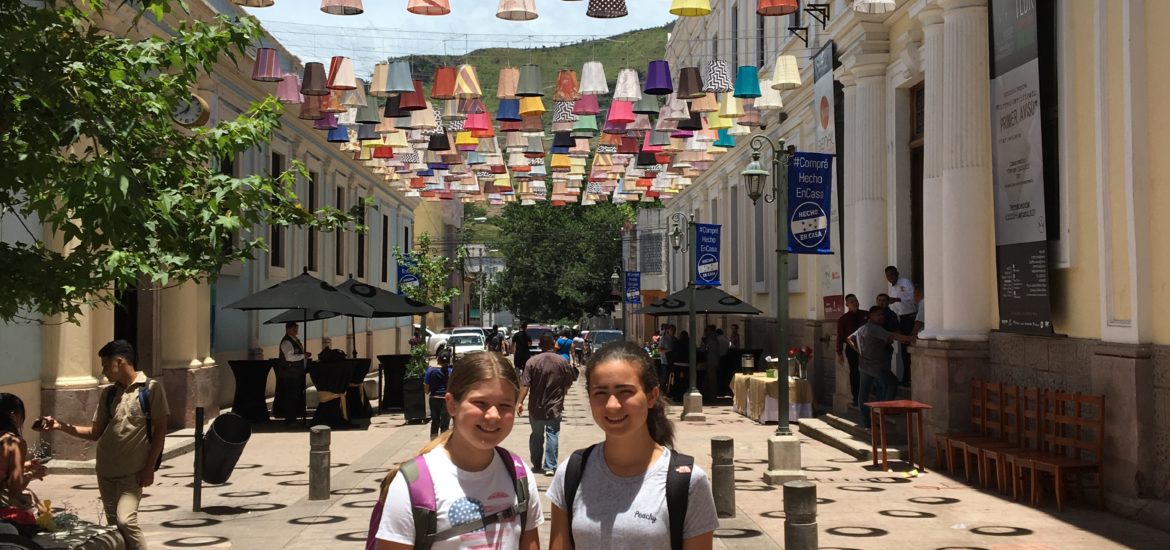Planning a vacation with your kids to a city consistently ranked as one of the most dangerous cities in the world takes some thought. The first thought most people have is, “why?!” Well, when your BFF and her husband work at the American Embassy in Tegucigalpa, Honduras, we saw an opportunity to spend time with dear friends and explore, cautiously, this oft-overlooked capital city.
At first glance, Tegucigalpa is a sprawling metropolis with a combination of deteriorating colonial architecture and western retail all framed in razor wire. The infrastructure is poor, the roads are haphazard, and a store selling anything as valuable as a birthday cake has an armed guard. In a list of tourist dos and don’ts, Tegucigalpa’s don’ts vastly outweigh the dos: don’t take any public transportation, don’t trust taxi drivers (they are run by the drug cartels), don’t stray from the central square and its tourist police, don’t walk around at night.
But if you do take advantage of what is available to the cautious tourist you will be pleasantly surprised.
As an unaccompanied American-looking female with two daughters in tow, we were not looking to aggressively explore the capital, Lonely Planet-style. So we spent a very pleasant afternoon making the most of what we could do safely. Our first stop was the Parque Central, the main square with the cathedral, vendors, a tiny market and pedestrian street. It’s a chaotic place with a colorful mix of street vendors, businessmen and women, construction workers, alms-seekers, police officers, stray dogs, and workaday Hondureños. The cathedral looks like many others in Central America, with a strikingly beautiful gold altar.
Across the busy square and a short walk down a pedestrian street takes you to a tiny gem of a museum, Museo para la Identidad Nacional (museum of national identity). We lucked into a guided tour with a local English-speaking guide, who pointed out the best exhibits in the museum and provided interesting background information for the kids. A highlight was the exhibit of a railroad promissory note; the UK government gave Honduras 25 million pounds for a railroad, which the president at the time stole for himself. Consequently, Honduras labored for decades to repay the loan for a railroad that was never built. The exhibit on the Banana War and the term “banana republic” sparked a lively conversation about the US role in Central American corruption and a long, Wikipedia-fueled conversation about why a preppy US clothing store would ever name itself after something so pejorative.
The museo, a former hospital building, is long on space and a little short on exhibitions so it fills its galleries with modern art by local artists. We really enjoy modern art in the United States, but modern art untethered from a native knowledge of cultural references can be bewildering and sometimes comical. Why is that dog in the box dismembered yet giving birth to a puppy? Why is that cube made of burnt matches? Why does that shadow print of a man have genitalia made of play-dough? I am sure there are interesting reasons but I just have no clue what they are.
Since this is Central America, one Catholic church is never enough. Iglesia Los Dolores, another cathedral with beautiful stained glass, was built for illiterate parishioners largely avoiding Spanish or Latin in its art. In a manic, congested, sensory-overload city like Tegucigalpa, sitting in the quiet, cool pews of a church was a welcome respite that the girls enjoyed much more than they anticipated. When there are not a lot of tourist attractions – or tourists, for that matter – it’s often the quiet and unexpected that are sometimes the most interesting.
For some local flavor, we stopped in a bakery for some pan dulce – which my younger daughter loves because it is every kid’s dream: white bread and sugar.
Most Honduran pastries are some variation on this theme. Be sure to wash them down with delicious local Honduran coffee. Even a casual spot will serve a decent brew. There are no Starbucks in Tegucigalpa – imagine! – but there is Espresso Americano on every corner to soothe your latte craving, and their ubiquitous jingle will stick in your head long after you leave the country.

Later we enjoyed Honduras’ national dish, pupusas: fresh corn tortillas stuffed with fresh cheese, refried beans or both, served with a pickled vegetable slaw. How does one stuff a flat tortilla? Carefully. Take the masa dough in your palm, insert the filling and carefully close the pocket around it, somehow flattening the packet into a pancake without breaking the seal and having the contents spew all over the pan. They are delicious, winning over even my picky eater. Also keep an eye out for Honduran carne asada, grilled meat with a delicious bitter orange marinade. The combination of the floral citrus flavor and smoky charred meat is fantastic.
Walking around downtown it is easy to be overwhelmed by the swirling chaos punctuated by burly gun-toting security guards. Beneath this veneer is a city with a fascinating story to tell and friendly locals happy to tell it. While others may do more exploring off the beaten path, when in Tegucigalpa with kids you can play it safe and still enjoy what the city has to offer. My kids learned to appreciate the cool quiet of a cathedral and the delicious simplicity of a pupusa, things that would be overlooked in a glitzier capital city. Far from impeding a sense of adventure, touring with my daughters provided the opportunity to take it slow and appreciate what we had – a valuable lesson to take anywhere in the world.


